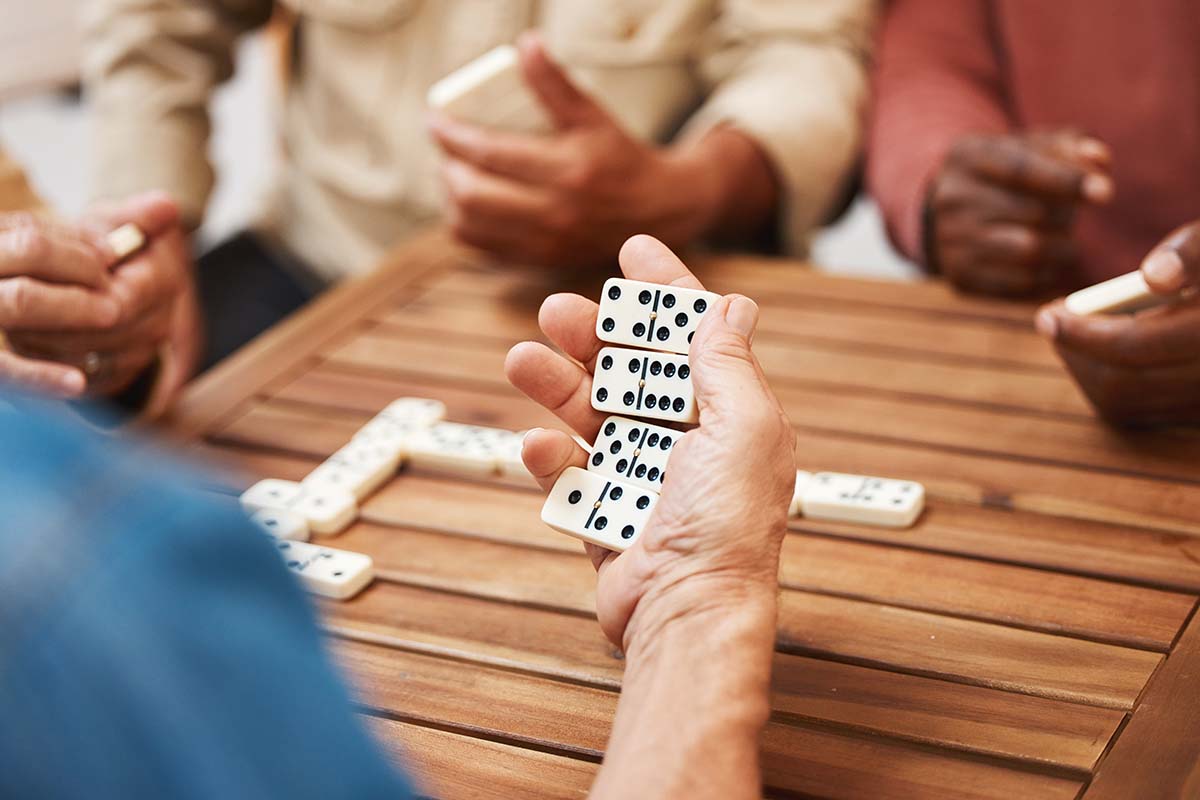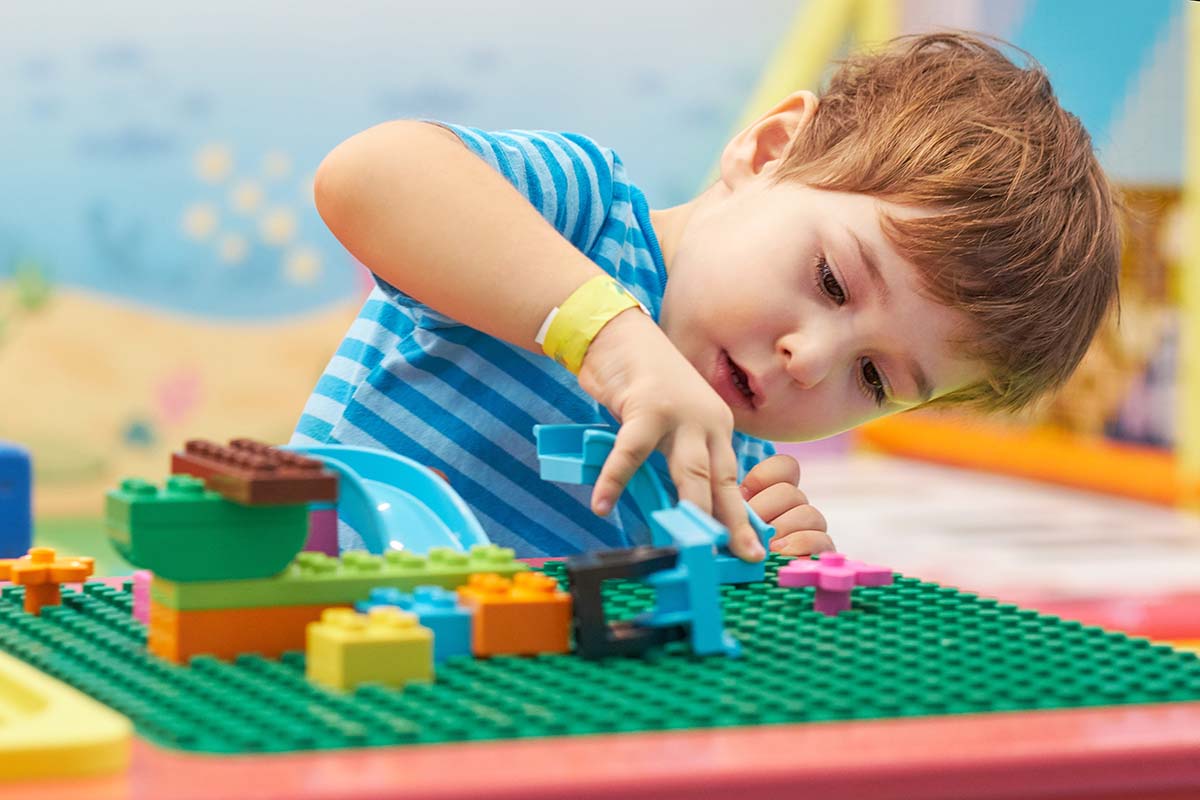
STEM subjects (Science, Technology, Engineering, Math) help build important skills kids need for school and in their future careers. These aren’t just learning STEM skills, but also problem solving, creativity, and adaptability that come with these subjects. Here at Spark Math by Spark Education , we not only excel in putting the “M” in STEM, we know the importance of making STEM part of everyday life. In this new series, we are going to explore some of the most fun, interactive, and educational STEM activities by grade level, that you can try at home. Check out these fun STEM activities for 1st grade kids!
1. Dominoes: Addition, subtraction, and chain reactions!
Dominoes are some of the best items to have in your home to practice STEM subjects. These numbered tiles have so many different uses, from gameplay to building and creating awesome designs by lining them up and knocking them down. There are many different ways to play games with dominoes. Domino games use math skills like matching numbers, addition, subtraction, and even pattern building. This is a fun and exciting way for the whole family to get together and have fun using math.
The tiles alone are a great manipulative to work on simple 1st grade math equations. Each tile has 2 sides, with a different number amount on each side from 0 – 6. Use these tiles to create quick and easy math questions by adding or subtracting up the different sides. With so many different number combinations and exciting ways to play, dominoes make 1st grade math exciting, interactive, and diverse.

Time to knock them over!
Dominoes aren’t just good for math, but are perfect for explaining science concepts in a fun way. Have some fun lining up dominoes and knocking them over to demonstrate basic physics. As one domino falls and hits another, it creates a chain reaction. Chain reactions happen throughout nature and science. While it’s fun knocking things over, these domino chain reactions show kids how one simple action can build momentum and speed in the right conditions. Experiment with how fast or slow the dominoes fall based on how much force you use to start the reaction and how you can design the dominoes to turn and build shapes. With dominoes, there are so many ways to understand the world, even when you’re just knocking them down.

2. Build shapes and structures with construction paper and building blocks!
In 1st grade math, students’ geometry skills start taking shape. Kids start learning more complex shapes like trapezoids, 3-D shapes, and how to create shapes by using other shapes. There are tons of ways to use everyday items to recognize, understand, and build shapes.
Start off by drawing shapes on construction paper. Then with safety scissors or help from a parent, cut out the different shapes. With these shapes, kids can start learning about a major 1st grade math concept, “halves”. What shapes do you get when you cut a square down the middle? Do you get a different shape if you cut it from corner to corner? Learning how to create new shapes from other shapes helps build recognition, reasoning, and problem-solving skills. Once kids understand shapes in 2 dimensions, they can move on to 3-D shapes and start using shapes to build.
It’s time to learn about 3-d shapes, like cubes, spheres, and cones. Legos and other building blocks are great manipulatives that can be used to show and build new items. How many rectangle blocks does it take to build a square? Have your child use the different blocks to create a bridge for their toys to cross over, or add some wheels to make a skateboard to ride on. Understanding how everyday things are based on the simple shapes kids know, helps build confidence in their skills. With the right problem-solving skills and math knowledge, anything can be possible.
3. Can you drop an egg without it breaking?
The egg drop experiment is a classic when it comes to STEM activities. It really embraces all the aspects of science, technology, engineering, and math. The experiment is simple, find a way to drop an egg from a tall height, without it breaking. Use things around the house or classroom to protect the egg. From bubble wrap to parachutes made out of paper towels and popsicle sticks, the only limit is imagination.
This experiment helps teach physics concepts like gravity, force, speed, problem solving, and creativity. This is a great group project for kids, as it helps build teamwork and promote social-emotional learning.
The best part of the egg drop is, if the experiment goes well, everyone is happy and feels successful. If the egg doesn’t make it, there’s a cool splat and slimy mess kids love. The important part of the experiment is to use what you’ve learned in STEM classes and personal experience to become problem solvers. So grab some eggs ( or maybe some plastic eggs for less messy trials) and try to find a way to protect them from the drop.
Build STEM and Math Skills With Spark!
Looking for more fun and interactive STEM activities for every grade? Check out our the Spark Math blog for great news and activities the whole family can enjoy. Looking for a weekly online class filled with learning activities, gamified learning, and all led by real experienced math teachers? Sign up to try a free demo class today! Looking for more great resources, blogs, and activities from Spark Math for the summer? Check out our Pinterest Page!
Pre- K / Kindergarten – First Grade – Second Grade – Third Grade – Fourth Grade – Fifth Grade




